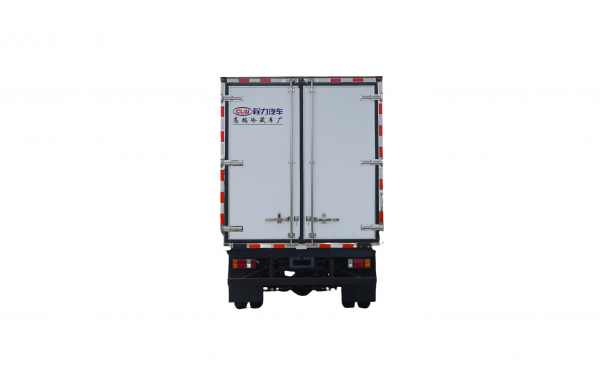Introduction
Managing a crane truck fleet involves overseeing a range of complex operations, from vehicle maintenance and scheduling to driver training and safety protocols. With the increasing demand for crane truck services in various industries such as construction, logistics, and utilities, effective fleet management is essential to ensure optimal performance, safety, and cost efficiency. This article explores the key strategies and best practices for managing a crane truck fleet efficiently, focusing on maintenance, driver management, scheduling, safety, and technology integration.
1. Importance of Crane Truck Fleet Management
Crane trucks are essential in various industries for lifting and transporting heavy loads, making them indispensable assets for companies that rely on heavy-duty equipment for their operations. Efficient fleet management is crucial for ensuring the reliability, safety, and cost-effectiveness of crane truck operations. By implementing effective fleet management practices, companies can optimize their resources, reduce downtime, improve safety standards, and enhance overall operational efficiency.
2. Maintenance Strategies for Crane Truck Fleet

Proper maintenance is critical for ensuring the reliability and longevity of crane trucks. Implementing a proactive maintenance strategy can help prevent costly breakdowns, minimize downtime, and extend the lifespan of the vehicles. Key maintenance practices for crane truck fleet management include:
- Regular inspections: Conducting routine inspections of crane trucks to check for signs of wear and tear, fluid leaks, and other issues that may affect performance.
- Preventive maintenance: Following a scheduled maintenance program to replace parts, lubricate components, and address minor issues before they escalate into major problems.
- Emergency repairs: Having a contingency plan in place for addressing unexpected breakdowns or malfunctions to minimize downtime and ensure prompt resolution of issues.
By prioritizing maintenance and adhering to a proactive approach, companies can enhance the reliability and performance of their crane truck fleet, leading to cost savings and improved operational efficiency.
3. Driver Management and Training
Effective driver management is essential for ensuring the safety, compliance, and performance of crane truck operations. Recruiting qualified drivers, providing comprehensive training, and monitoring driver performance are key aspects of managing a crane truck fleet efficiently. Key driver management strategies include:
- Driver recruitment: Hiring experienced, licensed drivers with a good track record of safety and compliance to operate crane trucks.
- Training programs: Providing comprehensive training programs for drivers to familiarize them with crane truck operations, safety procedures, and industry regulations.
- Performance monitoring: Implementing systems to track driver performance, including monitoring driving behavior, compliance with safety protocols, and adherence to schedules.
By investing in driver management and training, companies can reduce the risk of accidents, ensure regulatory compliance, and improve the overall efficiency of their crane truck fleet.
4. Scheduling and Dispatching
Efficient scheduling and dispatching are crucial for optimizing the use of crane trucks, maximizing productivity, and meeting customer demands. Implementing effective scheduling practices can help companies streamline operations, minimize idle time, and improve resource allocation. Key strategies for scheduling and dispatching in crane truck fleet management include:
- Route optimization: Planning efficient routes to minimize travel time, fuel consumption, and vehicle wear and tear.
- Real-time tracking: Using GPS technology to monitor vehicle locations, track deliveries, and respond to changing conditions in real-time.
- Load optimization: Maximizing the payload capacity of crane trucks by optimizing load distribution and coordinating multiple deliveries efficiently.
By implementing advanced scheduling and dispatching tools, companies can enhance the efficiency of their crane truck fleet, reduce operational costs, and improve customer satisfaction.
5. Safety Protocols and Compliance
Safety is a top priority in crane truck operations, given the risks associated with lifting and transporting heavy loads. Implementing robust safety protocols and ensuring compliance with industry regulations are essential for minimizing accidents, injuries, and liabilities. Key safety practices for crane truck fleet management include:
- Regular training: Providing ongoing safety training for drivers and personnel involved in crane truck operations to promote awareness of potential hazards and safe operating procedures.
- Equipment inspection: Conducting regular inspections of crane trucks and lifting equipment to ensure compliance with safety standards and identify potential issues.
- Incident reporting: Establishing protocols for reporting accidents, near misses, and safety violations to investigate root causes and prevent future incidents.
By prioritizing safety and compliance, companies can create a culture of safety, reduce the risk of accidents, and protect their employees, assets, and reputation.
6. Integration of Technology in Fleet Management
Technology plays a crucial role in modern fleet management, offering tools and solutions to streamline operations, improve efficiency, and enhance decision-making. Integrating technology into crane truck fleet management can provide valuable insights, automate processes, and optimize resource utilization. Key technologies for fleet management include:
- Fleet management software: Using specialized software to track vehicle performance, monitor maintenance schedules, and analyze data to optimize fleet operations.
- Telematics systems: Installing telematics devices in crane trucks to collect data on vehicle usage, fuel consumption, and driver behavior for performance analysis and optimization.
- Sweeper trucks safety standards : Providing drivers with mobile applications for route planning, communication, and real-time updates to enhance productivity and efficiency.
By leveraging technology solutions, companies can gain a competitive edge, improve operational visibility, and drive continuous improvement in their crane truck fleet management practices.
Conclusion
Efficient crane truck fleet management is essential for ensuring the reliability, safety, and cost-effectiveness of crane truck operations in various industries. By implementing proactive maintenance strategies, investing in driver management and training, optimizing scheduling and dispatching, prioritizing safety protocols, and integrating technology solutions, companies can enhance the efficiency and performance of their crane truck fleet. By following best practices and staying abreast of industry trends, companies can stay ahead of the competition, maximize their resources, and deliver exceptional service to their customers.
